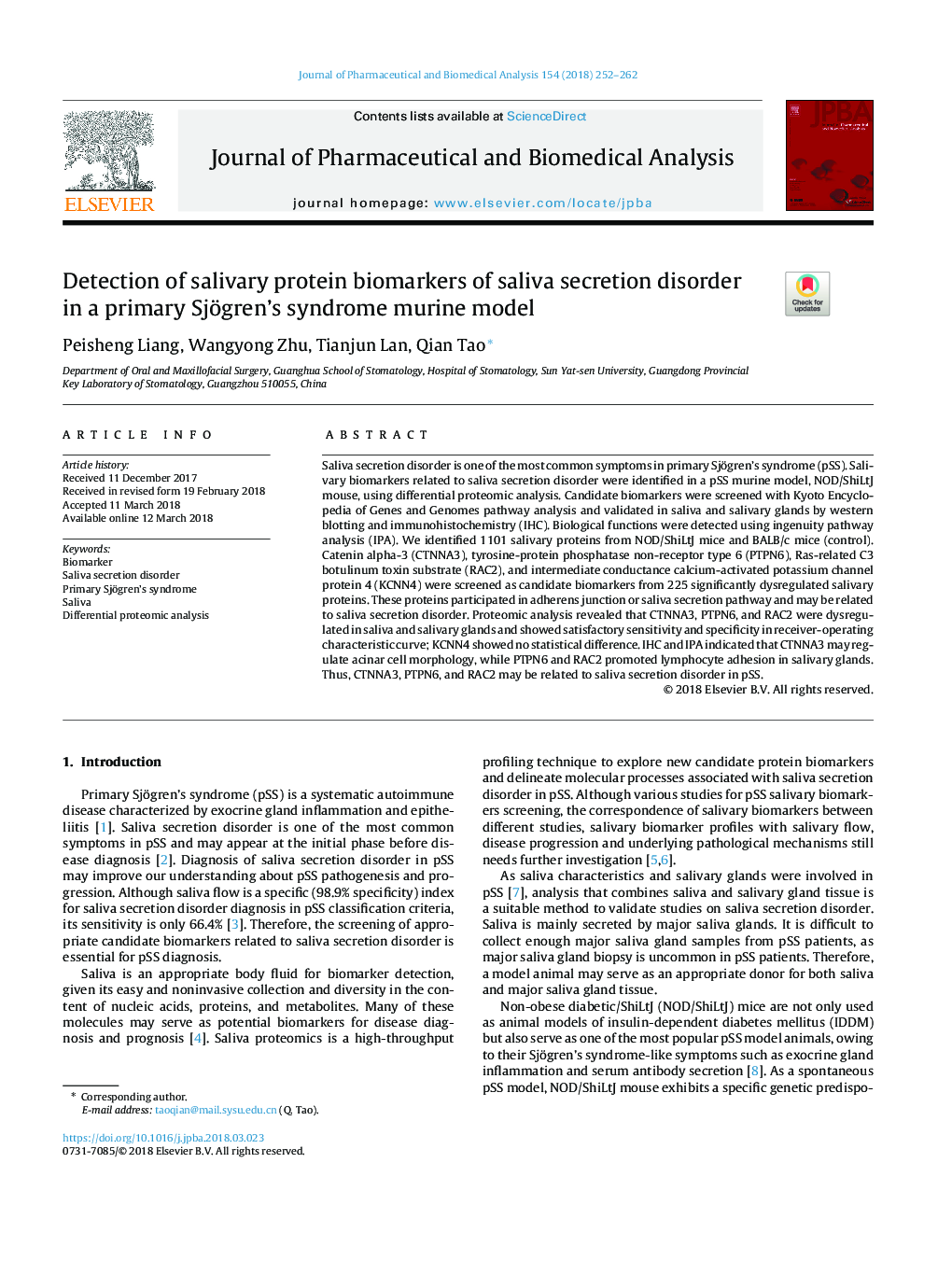| Article ID | Journal | Published Year | Pages | File Type |
|---|---|---|---|---|
| 7626806 | Journal of Pharmaceutical and Biomedical Analysis | 2018 | 11 Pages |
Abstract
Saliva secretion disorder is one of the most common symptoms in primary Sjögren syndrome (pSS). Salivary biomarkers related to saliva secretion disorder were identified in a pSS murine model, NOD/ShiLtJ mouse, using differential proteomic analysis. Candidate biomarkers were screened with Kyoto Encyclopedia of Genes and Genomes pathway analysis and validated in saliva and salivary glands by western blotting and immunohistochemistry (IHC). Biological functions were detected using ingenuity pathway analysis (IPA). We identified 1101 salivary proteins from NOD/ShiLtJ mice and BALB/c mice (control). Catenin alpha-3 (CTNNA3), tyrosine-protein phosphatase non-receptor type 6 (PTPN6), Ras-related C3 botulinum toxin substrate (RAC2), and intermediate conductance calcium-activated potassium channel protein 4 (KCNN4) were screened as candidate biomarkers from 225 significantly dysregulated salivary proteins. These proteins participated in adherens junction or saliva secretion pathway and may be related to saliva secretion disorder. Proteomic analysis revealed that CTNNA3, PTPN6, and RAC2 were dysregulated in saliva and salivary glands and showed satisfactory sensitivity and specificity in receiver-operating characteristic curve; KCNN4 showed no statistical difference. IHC and IPA indicated that CTNNA3 may regulate acinar cell morphology, while PTPN6 and RAC2 promoted lymphocyte adhesion in salivary glands. Thus, CTNNA3, PTPN6, and RAC2 may be related to saliva secretion disorder in pSS.
Related Topics
Physical Sciences and Engineering
Chemistry
Analytical Chemistry
Authors
Peisheng Liang, Wangyong Zhu, Tianjun Lan, Qian Tao,
